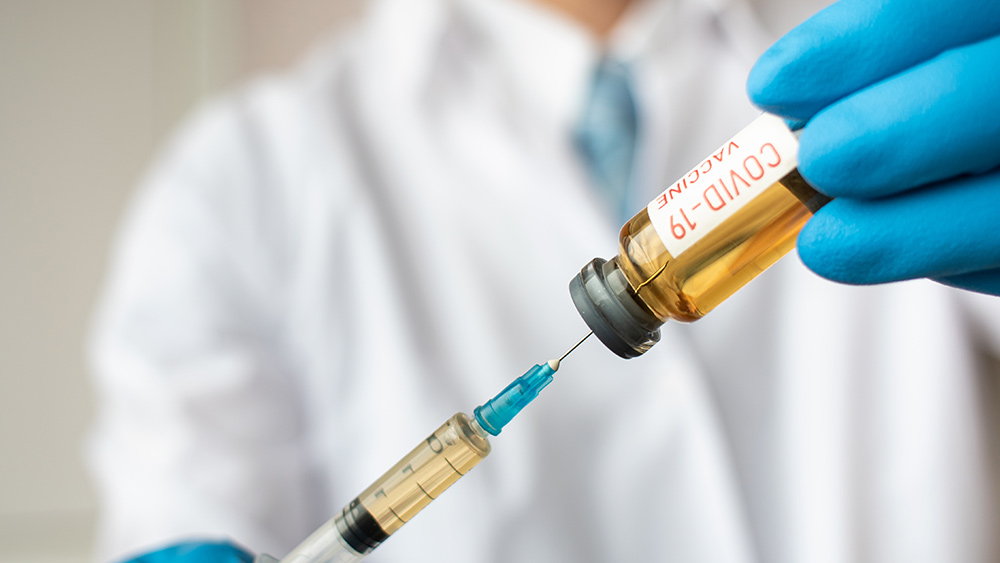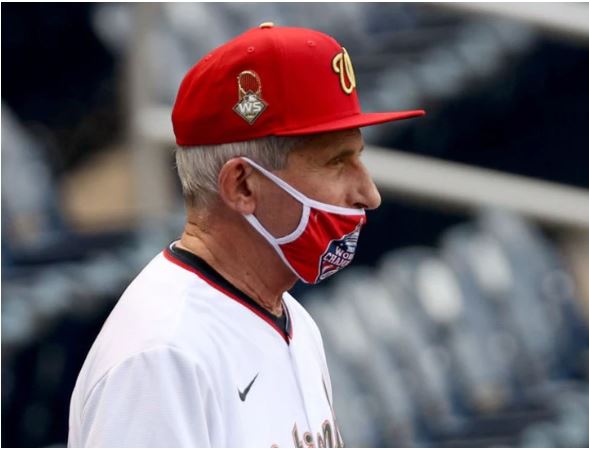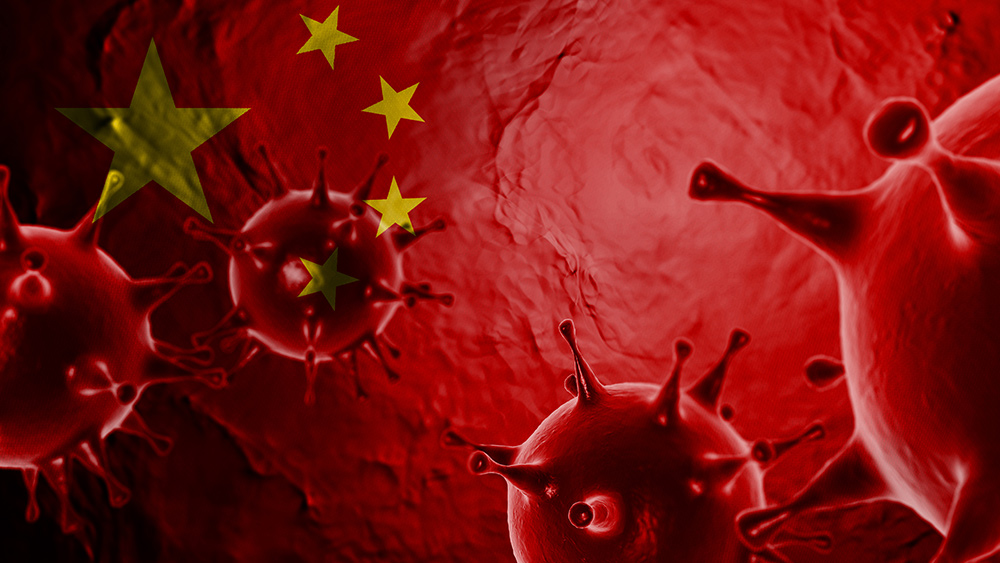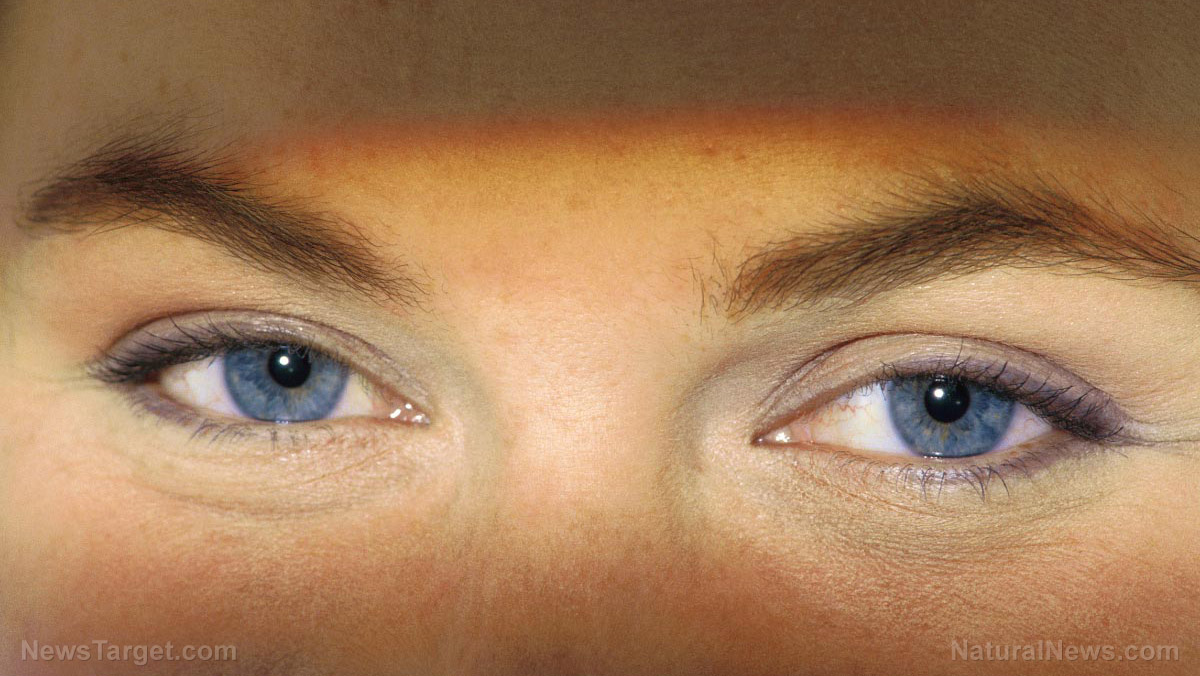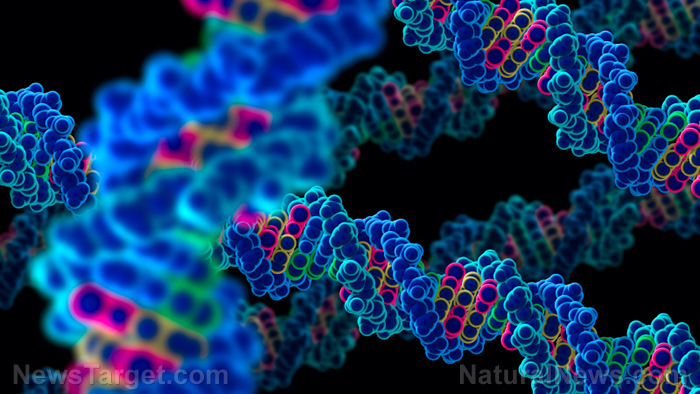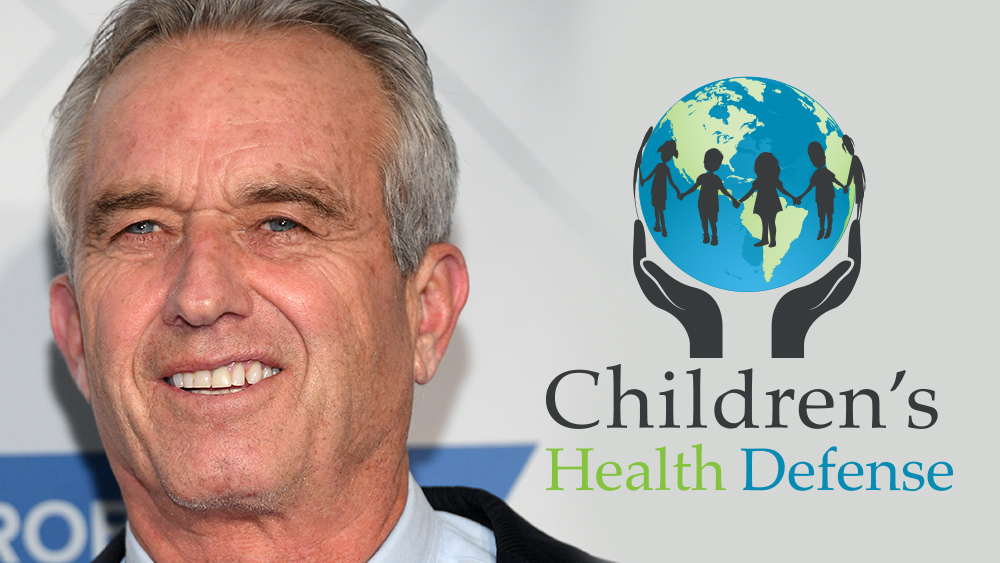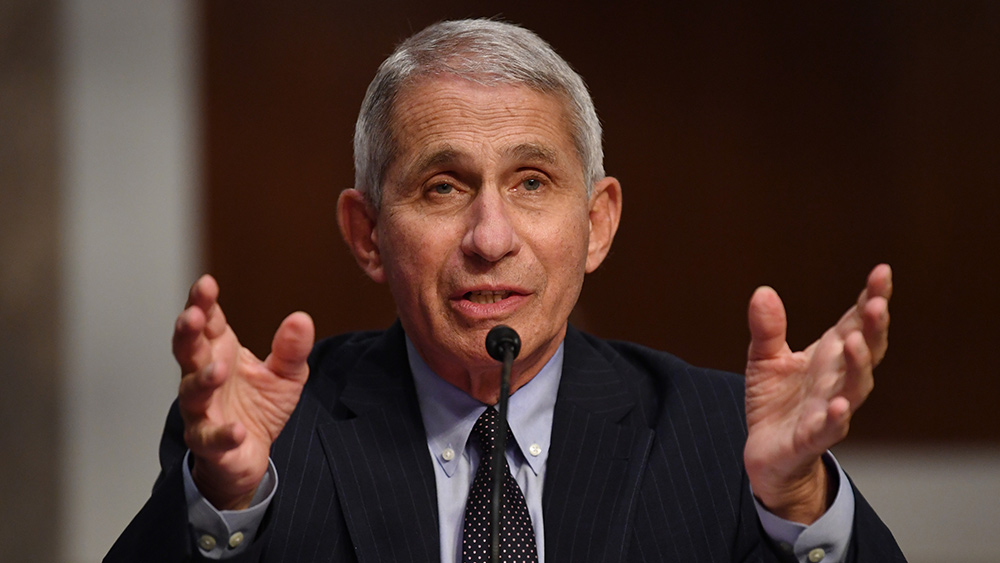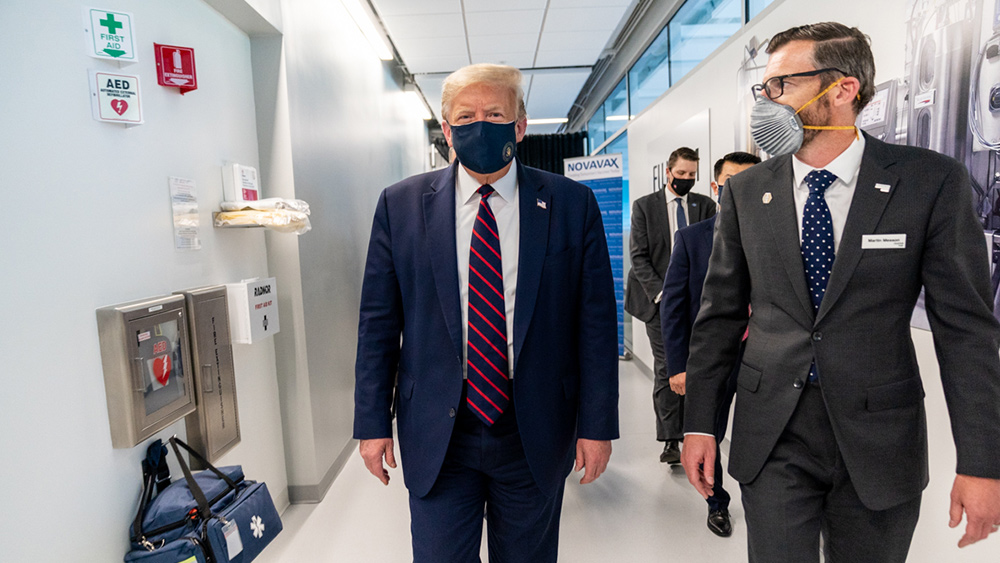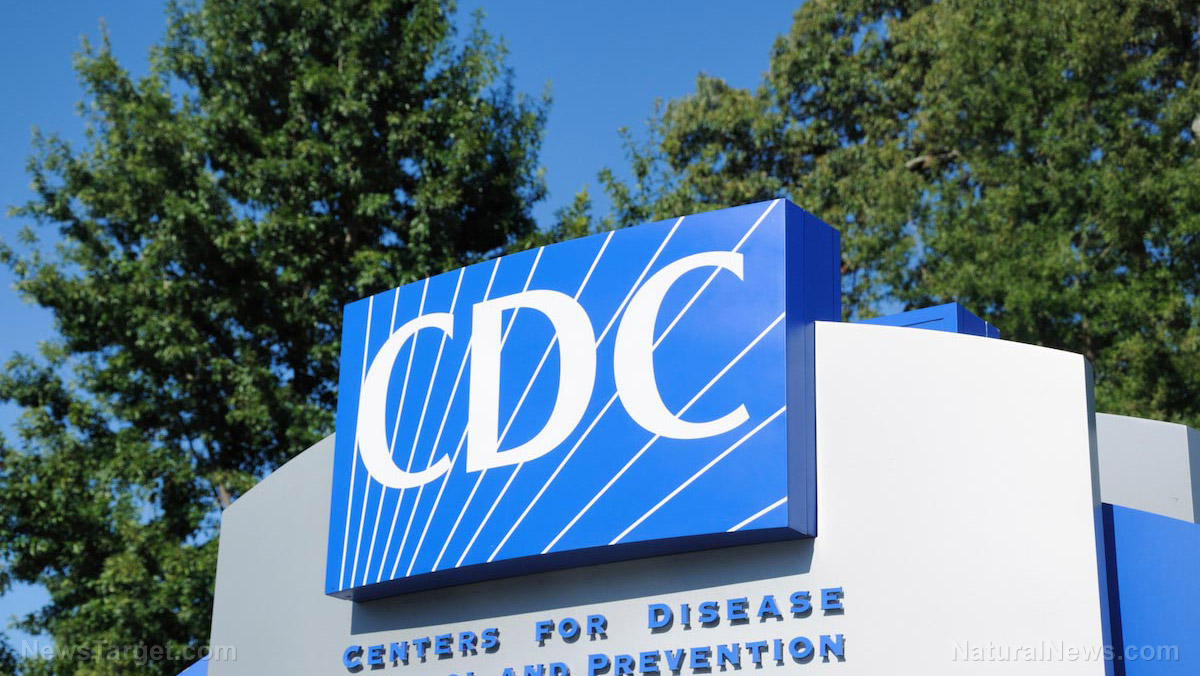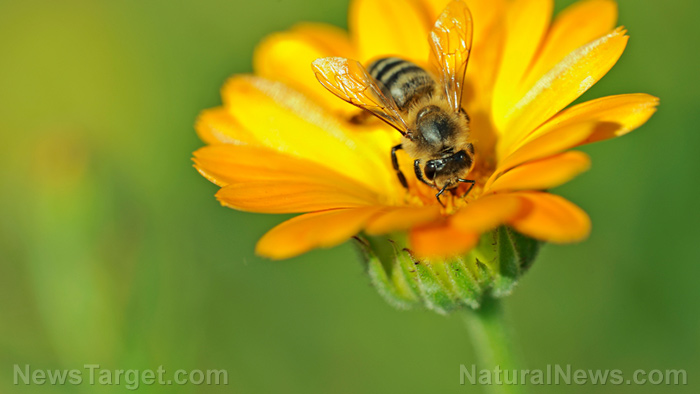Call for an investigation of NIAID’s collaboration with China on the COVID-19 virus
09/15/2020 / By News Editors
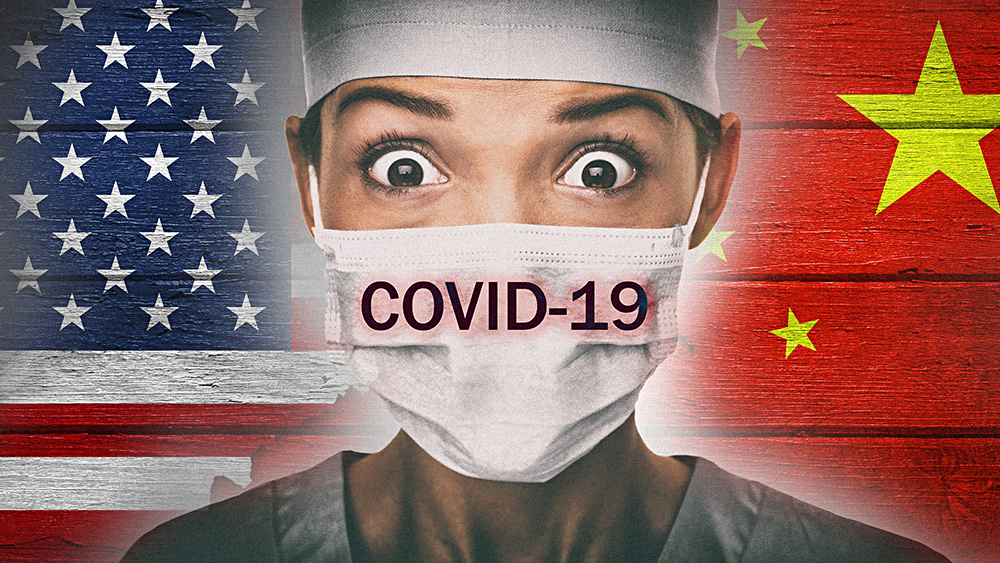
Based on the preponderance of evidence, there is now little question that the virus that has caused the worldwide pandemic likely came from a laboratory in China. The question remains whether an accidental leak was a consequence of biological warfare experiments by the Chinese Communist Party (CCP). The Chinese government collaborated with the World Health Organization to downplay the threat and make the case that the virus appeared to not be transmitted from human to human, but rather from animals (primarily bats) to humans. There is also the question of why China cut off all domestic flights between Wuhan (population, 11 million) and Beijing and Shanghai, but not between Wuhan and Europe and America.
(Article by Col. Lawrence Sellin (Ret.) republished from CCNationalSecurity.org)
There are also questions about the role of National Institute of Allergy and Infectious Diseases’ (NIAID), a division of the National Institutes of Health (NIH) headed by Dr. Anthony Fauci, in directing U.S. grant funds to the Wuhan Institute of Virology and the nature of the experiments that funding supported. With that, I am calling for an investigation of NIAID’s controversial research collaboration with China regarding the origin of the COVID-19 virus. A Senate committee or Justice Department investigation would be a good start. I have written a series of articles on this topic, which you can find here.
As a summary, I have compiled this following list of evidentiary data points that could serve as the starting point for whatever entity takes on this very necessary investigation:
On April 27, 2020 it was reported that the National Institutes of Health, presumably with the authorization of President Donald Trump, suspended spending on the remaining $369,819 of a National Institute of Allergy and Infectious Diseases (NIAID) grant to the EcoHealth Alliance, a long-time scientific collaborator with Chinese scientists, in particular, the Wuhan Institute of Virology.
Not privy to the actual facts related to the decision, that action precipitated outrage in the mainstream media and among some representatives of the scientific community.
Here are those facts.
Ten days earlier, during a press briefing by the Coronavirus Task Force, the following exchange took place between a White House correspondent and the President (1:10:57 – 1:11:33):
Question: “U.S. intelligence is saying this week that the coronavirus likely came from a Level 4 lab in Wuhan. There is also another report that the NIH under the Obama Administration in 2015 gave that lab 3.7 million dollars in a grant. Why would they give a grant like that to China?”
President Trump: “The Obama Administration gave them a grant of 3.7 million. I have been hearing about that. And we’ve instructed that any grants that are going to that area we’re looking at it literally about an hour ago and also earlier in the morning. We will end that grant very quickly.”
On April 19, 2020, Michael Lauer, National Institutes of Health (NIH) Deputy Director for Extramural Research, wrote to EcoHealth Alliance’s vice president for research, Kevin Olival stating:
“EcoHealth Alliance, Inc. is the recipient, as grantee, of an NIH grant entitled “Understanding the Risk of Bat Coronavirus Emergence.” It is our understanding that one of the sub-recipients on this grant is the Wuhan Institute of Virology (“WIV”). It is our understanding that Wuhan Institute of Virology studies the interaction between corona viruses and bats. The scientific community believes that the coronavirus causing COVID-19 jumped from bats to humans likely in Wuhan where the COVID-19 pandemic began. There are now allegations that the current crisis was precipitated by the release from Wuhan Institute of Virology of the coronavirus responsible for COVID-19. Given these concerns, we are pursuing suspension of Wuhan Institute of Virology from participation in federal programs.
While we review these allegations during the period of suspension, you are instructed to cease providing any funds to Wuhan Institute of Virology. This temporary action is authorized by 45 C.F.R. § 75.371(d) (“Initiate suspension or debarment proceedings as authorized under 2 C.F.R. part 180”). The incorporated OMB provision provides that the funding agency may, through suspension, immediately and temporarily exclude from Federal programs persons who are not presently responsible where “immediate action is necessary to protect the public interest.” 2 C.F.R. § 180.700(c). It is in the public interest that NIH ensure that a sub-recipient has taken all appropriate precautions to prevent the release of pathogens that it is studying. This suspension of the sub-recipient does not affect the remainder of your grant assuming that no grant funds are provided to WIV following receipt of this email during the period of suspension.”
On April 21, 2020, Peter Daszak, president of EcoHealth Alliance, responded by email to Lauer:
“I can categorically state that no funds from 2R01 AI110964-06 have been sent to Wuhan Institute of Virology, nor has any contract been signed. Furthermore we will comply with NIAID’s requirements, of course.”
On April 24, 2020, Lauer notified Daszak that the NIAID, headed by Dr. Anthony Fauci, has elected to terminate the project “Understanding the Risk of Bat Coronavirus Emergence”, funded under grant R01 AI110964 because “NIH does not believe that the current project outcomes align with the program goals and agency priorities.”
On June 23, 2020, in response to a question by Rep. Marc Veasey (D-TX) regarding the reasons for the cancellation of the EcoHealth Alliance grant, Dr. Fauci said (5:32:20 – 5:34:03):
“It was cancelled because the NIH was told to cancel it. I don’t know the reason, but we were told to cancel it.”
In July 2020, Lauer sent the EcoHealth Alliance a letter stating the agency was reinstating the grant, but also instantly suspending it again pending the completion of certain actions, which the EcoHealth Alliance considered “impossible and irrelevant conditions”:
- The EcoHealth Alliance must provide a sample of the pandemic coronavirus that WIV used to determine its genetic sequence.
- The group must arrange for an outside inspection of WIV and its records “with specific attention to addressing the question of whether WIV staff had SARS-CoV-2 in their possession prior to December 2019,” Lauer wrote.
- The nonprofit must explain purported restrictions at WIV including “diminished cell-phone traffic in October 2019, and the evidence that there may have been roadblocks surrounding the facility from October 14-19, 2019.”
- The nonprofit must “provide the NIH with WIV’s responses to the 2018 Department of State cables regarding safety concerns.”
Despite that continuing controversy, on August 27, 2020, the day that Donald Trump was preparing to accept his party’s nomination for a second term as President of the United States, the NIH quietly and unceremoniously announced that the EcoHealth Alliance would receive $7.5 million as part of an $82 million program to create a global network of ten Centers for Research in Emerging Infectious Diseases (CREID).
Leading this effort is Dr. Anthony Fauci, a member of the White House Coronavirus Task Force and a frequent sparring partner with the President over how best to “slow the spread” of the virus.
It is unclear what the precise basis for the cancellation of the earlier EcoHealth Alliance grant was or how a new award over twenty times larger than the amount cut could be given to the EcoHealth Alliance while the original controversy remains unresolved.
Here is what is known.
On December 9, 2019, long before the world knew anything about COVID-19, a video interview took place with Daszak, whose comments may provide some insight regarding the Trump Administration’s reasons for questioning the research collaboration between the EcoHealth Alliance and the Wuhan Institute of Virology.
9:22 – 9:30 Daszak states that the vast majority of EcoHealth Alliance’s funding comes from the U.S. government.
Daszak: “Over 80% of our funds comes from federal support. Like a university department we are going after federal money all the time.”
11:58 – 12:29 Daszak explains how the EcoHealth Alliance uses its funding to invest in the infrastructure of other countries like China through subcontracts and presumably hiring Chinese technicians and doctoral students.
Question: “So, give me an overview, you said you have labs throughout the world that you work with. Are they? They are not employees of yours. You contract them or some of them are?”
Daszak: “Usually we subcontract to labs, but we usually try and have in every country a country program officer, who manages the work we do in that country. And sometimes regional. And we often hire technicians in labs or Ph.D. students, in order to have a presence in the lab. There is more of a buy-in when you have a person there.”
12:48 – 12:56 Daszak says that he is personally directing the EcoHealth Alliances’s operations in China and Malaysia.
Daszak: “I have two countries that I am still, kind of, in charge of in the organization, China and Malaysia.”
13:04 – 13:21 Daszak repeats that the EcoHealth Alliance is training and building capacity in other countries like China.
Question: “So, the point is to establish capabilities in other countries, not just take specimens from them and bring them home?”
Daszak: “That’s right. That’s the strategy. And, you know, the old adage if you teach people how to do it, give them the capacity and the tools, then you have really made a difference.”
20:24 – 20:31 Daszak reiterates that he is paying people working locally presumably in China.
Question: “Now, in all these places we are talking about, you have people who are supported by you. They are paid by you?”
Daszak: “Yeah.”
Of the ten out of seventeen scientific publications listed as products of the cancelled NIAID grant, five are direct collaborations with the Wuhan Institute of Virology and one other research project was conducted with Chinese government laboratories.
Given the above information, there is reason to question Daszak’s statement in his April 21, 2020 email to NIH stating:
“I can categorically state that no funds from 2R01 AI110964-06 have been sent to Wuhan Institute of Virology, nor has any contract been signed.”
There are additional reasons to question the collaborative work between the EcoHealth Alliance and China regarding the collection of dangerous emerging coronaviruses in bat populations, the laboratory manipulation done on them and Daszak’s seemingly unquestioning support for the Chinese Communist Party’s narrative that the COVID-19 pandemic was naturally-occurring (emphasis added).
Beginning at 27:49, Daszak explains the basis of the naturally-occurring narrative and the collection of over one hundred bat coronaviruses capable of infecting humans, but untreatable with drugs or vaccines. Those coronaviruses are presumed to be stored in Chinese laboratories.
“So, we did a couple of things with it. So, one is around SARS. We focused on SARS coronavirus emerged from a wildlife market. And whilst the first pandemic of this century. So, it’s big event. And, so we started to trace back from the wildlife market, which species carried the virus, that came into those markets. We found that it was bats, not civets, was the original idea. So, we started looking where did they come from. And we went out to southern China. And did surveillance of bats across southern China. And we’ve now found, after six or seven years of doing this, over one hundred new SARS-related coronaviruses, very close to SARS. Some of them get into human cells in the lab. And some of them can cause SARS disease in humanized mouse models. And are untreatable with therapeutic monoclonals [antibodies] and you can’t vaccinate against them with a vaccine.”
At 29:51, Daszak describes bioengineering of those viruses by inserting components of one coronavirus into another.
“Well, I think, coronavirus is a pretty good, I mean, you’re a virologist [the interviewer], you know all this stuff, but the, you can manipulate them in the lab pretty easily. Spike protein drives a lot of what happens with the coronavirus, zoonotic risk. So, you can get the sequence, you can build the protein, and we work with Ralph Baric at UNC [University of North Carolina] to do this. Insert it into a backbone of another virus, and do some work in the lab. So, you can get more predictive, when you find the sequence. You have this diversity. Now, the logical progression for vaccines is, if you are going to develop a vaccine for SARS, people are going to use pandemic SARS, but let’s try to insert these other related and get a better vaccine.”
As director of the NIAID, Dr. Fauci should be obliged to answer questions and provide information regarding his support of Chinese research through the funding of the EcoHealth Alliance and other U.S. institutions under the new $82 million program to create a global network of ten Centers for Research in Emerging Infectious Diseases.
Read more at: CCNationalSecurity.org
Tagged Under: biological warfare, bioweapons, CCP virus, Chinese propaganda, collaboration, coronavirus, covid-19, expose, infections, lies, outbreak, pandemic, treason, virus, wuhan virus

